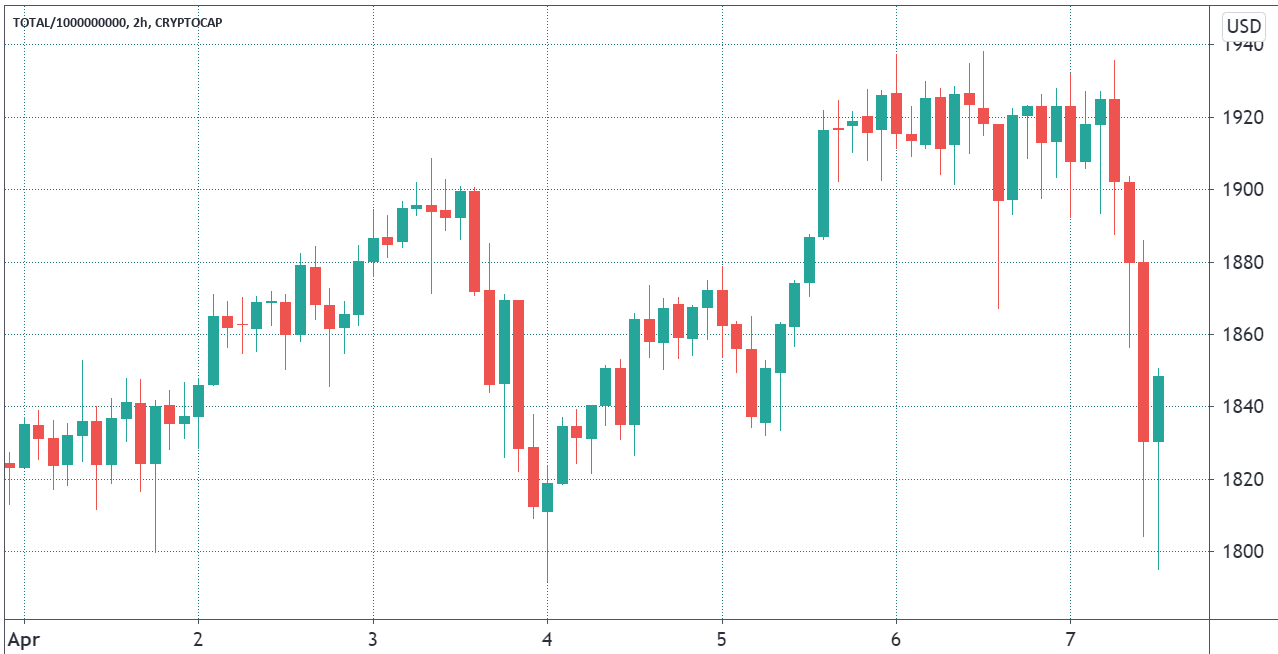Retail traders become ‘sitting ducks’ as sell-off triggers $1.4B liquidation

After flirting with a $2 trillion market cap for the last couple of days, the cryptocurrency market took a 7% hit on April 7, dropping the total crypto market cap to $1.8 trillion. As the unexpected sell-off took place, investors scrambled to find a reason to explain the move.
Analysts typically identify the use of excessive leverage as the prime suspect as this usually occurs as the market reaches an all-time high and traders get greedy, but this is an easy conclusion to reach.
The actual cause could be near impossible to determine. Still, a starting place is looking at how high buyers’ leverage was compared to the previous weeks. Analysts must also question whether a $1 billion liquidation is even significant in the current bullish environment.
Leverage amplifies price movements on both sides

The negative price swing on April 7 resembles the rally that took place two days earlier. However, retail traders deploy leverage by using perpetual futures contracts (inverse swaps), which can amplify price corrections.
A 5% move is enough to liquidate traders using 20 times leverage, and exchange order books tend to become thin below that level since traders seldomly have orders in place.

As shown above, there are $4.6 million worth of bids down to $1.15 for Cardano (ADA) in the above example. Behind the 5% threshold, there’s only $1.9 million down to $1.06, or 12% below last trade.
Thin order books are a gold mine for scalpers and arbitrage desks. Once retail markets enter highly leveraged positions, there are multiple incentives to push down the price and trigger liquidations.

Today’s 12-hour, $1.4 billion liquidation might seem excessive, but this aggregates the entire futures markets. Moreover, this represents a mere 3% of the total $46 billion in open interest. Had this movement taken place some six months ago, the figure would have been north of 12%.
However, implying that liquidations triggered the drop is not the best answer as those are only triggered when markets drop 4% or more. Although analysts may never fully understand what has triggered the correction, a “buy the rumor sell the news” event could have taken place after Coinbase presented its quarterly earnings.
The funding rate is high but not abnormal
It’s also important to review how high the funding rate was and, more importantly, for how long. Even if the 8-hour fee reaches 0.20%, equivalent to 4.3% per week, this will not force longs to close positions.

As shown above, the average funding rate across top exchanges did not rise above 0.10%, which is substantially lower than the late February levels.
It is natural during rallies for long traders to enter excessively leveraged positions, and this situation can last from a couple of hours to weeks.
Sometimes retail traders turn into sitting ducks
Whales and market makers likely knew that the exchange order books were thin and that retail traders were excessively leveraged. Thus one cannot discard today’s price action being a premeditated maneuver.
However, arbitrage between exchanges and futures markets happens almost instantly, so no trail is left. Analysts and pundits might pinpoint numerous reasons for today’s move, but the available data suggests that leverage itself isn’t to blame.
The views and opinions expressed here are solely those of the author and do not necessarily reflect the views of Cointelegraph. Every investment and trading move involves risk. You should conduct your own research when making a decision.



